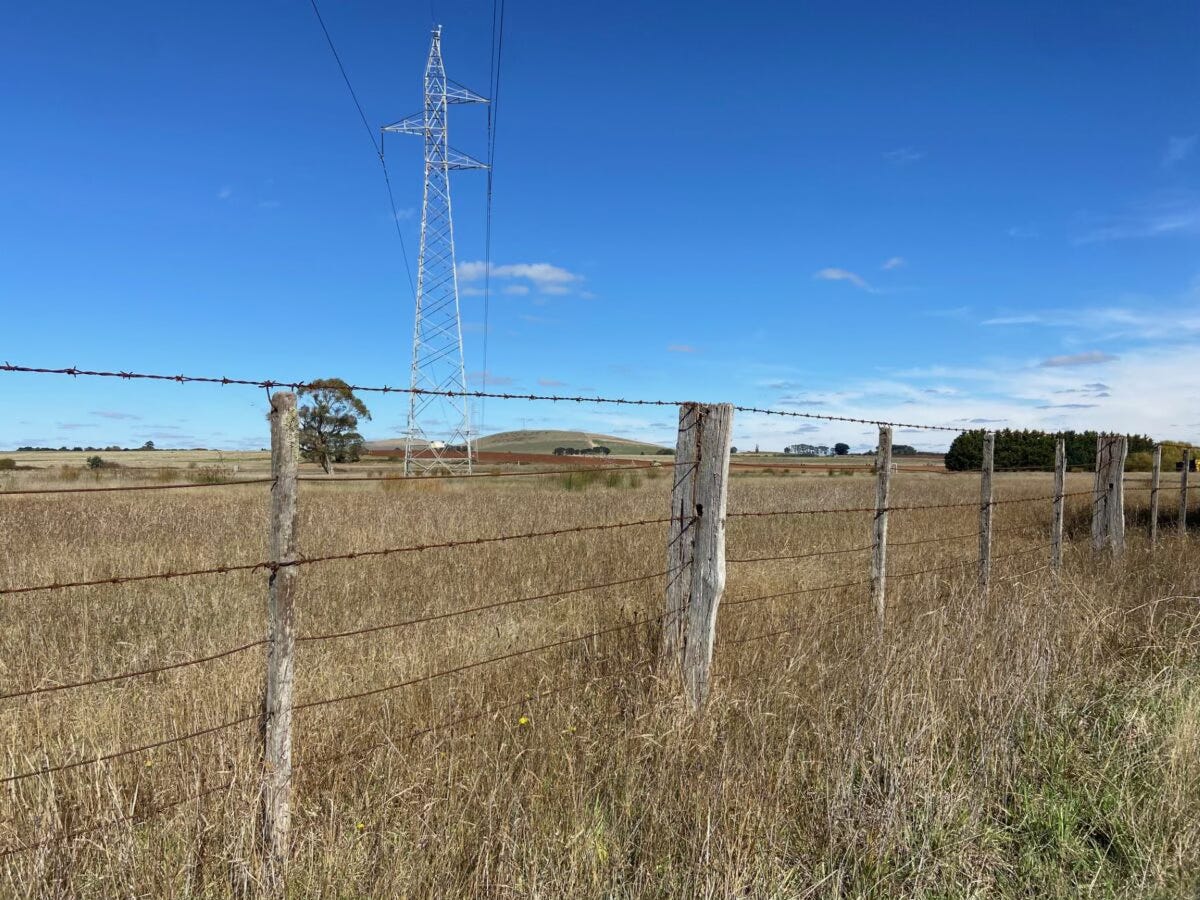Absolutely Draconian: Victorian Farmers Hit with Crushing Fines for Defending Their Land
Australia’s Net-Zero Push Sparks Global Rural Resistance—Is the Green Revolution Leaving Farmers Behind?
“The government is taking over planning controls … now saying to farmers we’re going to come along with a massive stick if you say no. What the government’s doing is draconian.” - James Newberry Victoria Shadow Treasurer
A Rural Line in the Sand
On the windswept plains of western Victoria, tractors and cattle stand sentinel on farms passed down through generations. But beneath the hum of wind and birdsong, a new kind of threat crackles—one not of drought or pests, but of steel towers, government decrees, and staggering fines. In June 2025, the National Electricity (Victoria) Amendment Bill armed transmission companies with unprecedented powers: $12,210 fines for any farmer who dares block their land from being invaded by surveyors and construction crews. The government calls it necessary for the green transition. Farmers call it tyranny.

“They Can March In, Whether We Like It or Not”
Emma Ryan, a sheep and canola farmer near Ararat, watched in disbelief as utility surveyors drove through her gate. “We locked the gates, we pleaded, but they said the law is on their side now. If we resist, we risk $12,000 fines—and for what? So they can string high-voltage wires across our paddocks for a city we’ll never see?”
The new legislation—passed with little rural consultation—removes the last defense farmers had against forced land access. “This isn’t democracy. It’s a government rolling out the red carpet for big energy companies while trampling those who feed the nation,” says Ryan.
Fines for Defending the Farm: The Human Cost
The $12,210 fines (per incident) aren’t just numbers. For family farms already squeezed by costs, one penalty can mean the difference between staying afloat and losing it all. Community forums and farmer protests have erupted across Victoria, with social media amplifying their outrage:
@FarmersWeeklyAU: “Victorian farmers fined $12K for protecting their land—energy trumps agriculture.”
@RuralAus: “Farmers bullied for green agendas. Where is the justice?”
Many farmers are refusing to pay, risking legal battles and further financial devastation. “They say it’s progress,” says Mark Llewellyn, a grain farmer. “But to us, it feels like an eviction notice from our own land.”
The Global Transmission Land Grab
What’s happening in Victoria is no isolated incident. Around the world, farmers and rural communities are being pushed aside to make way for massive new transmission corridors:
United States: From Nebraska to Virginia, farmers have protested “energy highways” for wind and solar, citing property devaluation, lost farmland, and legal bullying.
United Kingdom: Welsh and Scottish farmers have staged tractor blockades, warning that transmission towers destroy landscapes, fragment habitats, and erode rural culture.
France, Germany, and Brazil: Rural protests have delayed or halted dozens of grid expansion projects, often citing lack of consent and disproportionate impacts on agricultural land.
In every case, the rhetoric is the same: Governments say transmission lines are essential for a net-zero future. Farmers say they’re being sacrificed for someone else’s vision of “progress.”
Why the Transmission Lines? The Energy Race Explained
1. The Renewable Revolution
Solar farms, wind parks, and battery arrays are booming—but the best resources are far from cities. To bring “green electrons” to urban users, new high-voltage lines must cross hundreds of miles of farmland and bush.
2. Net-Zero Deadlines
Countries have pledged to slash carbon emissions by 2030 or 2050. Transmission networks, built for fossil-fuel power plants near cities, must be radically expanded to connect distant renewable projects.
3. Corporate and Political Interests
Major transmission projects are often private-public partnerships, with big construction, energy, and infrastructure firms standing to profit from government-backed guarantees and subsidies.
4. The Global Supply Crunch
A worldwide surge in grid investment—$800 billion in planned upgrades—means intense competition for land and resources. Farmers often bear the brunt, with little recourse.
What’s Really Fueling the Energy Drive?
The public message is simple: “We need transmission lines to save the climate.” But the reality is more complex:
Energy Corporations: Green energy is big business. Major utilities and asset managers see transmission lines as multi-decade, government-backed revenue streams.
Urban Political Pressure: Most voters and politicians live in cities. Their demand for reliable, renewable power outweighs the needs of rural minorities.
Speculative Investment: Hedge funds and infrastructure REITs are pouring money into “grid modernization”—treating farmland as just another asset to be acquired or condemned.
The Hidden Cost: Food Security and Rural Decline
Every acre lost to transmission lines is an acre lost for food production. Critics warn that pushing farmers off their land not only undermines rural economies, but threatens food security—especially as climate change already strains supply chains.
“Urban Australia doesn’t realize what’s at stake,” says Peter Vickers of the Victorian Farmers Federation. “They want green power, but not at the cost of their breakfast. There must be a balance—and right now, there is none.”
Is There a Better Way?
Farmers aren’t opposed to clean energy—but they demand respect, compensation, and a seat at the table. Some experts propose routing lines along existing corridors, offering higher buyouts, or investing in local microgrids to benefit both cities and countryside. Others call for independent land-use tribunals, not energy company lawyers, to decide the fate of family farms.
A Test for Democracy
The standoff in Victoria is a test—not just of rural resolve, but of whether a society can pursue climate goals without trampling its agricultural backbone. As long as governments push land grabs in the name of “the greater good,” farmers will resist. And in the echo of every locked gate, the question lingers: Who gets to decide the price of progress—and who pays it?
References:



